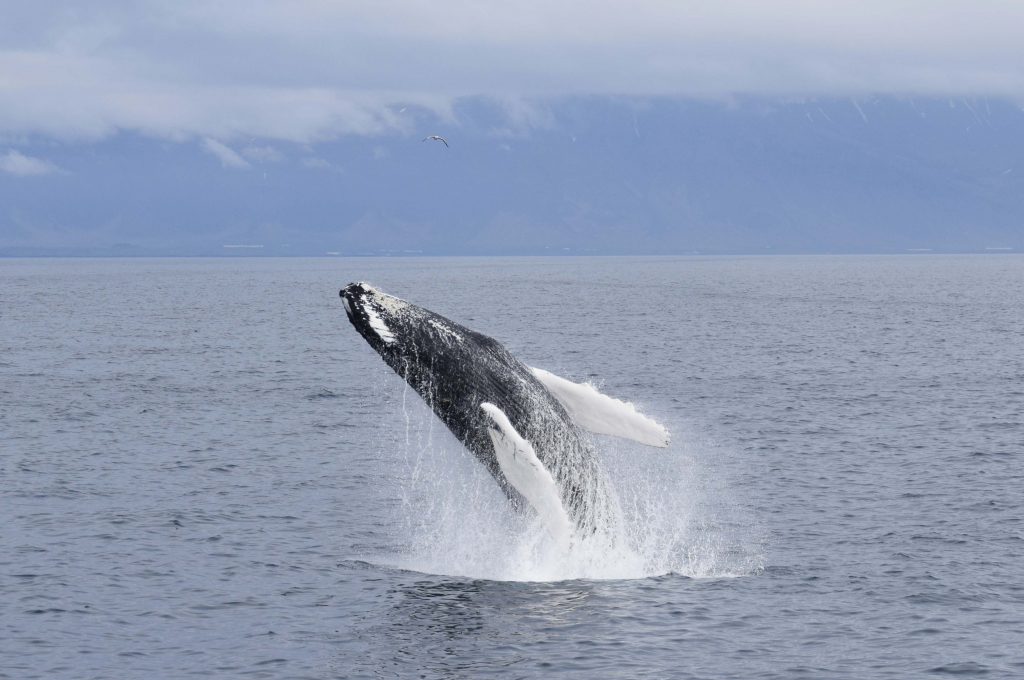Breaching is known as a common surfacing behaviour for most of the cetacean species, where whales and dolphins leap parts or their entire body out of the water. Since breaching seems to be related to sociality, some species display a more frequent breaching rate than others. Especially, when pods or schools, tend to be larger, a higher percentage for this behaviour can be detected. For example, humpback whales, sperm whales and offshore dolphin species are well known to show a higher display than others. Nevertheless, precise reasons for this behaviour are not more than presumptions yet. Here, we go over possible reasons that help us answer the questions “Why do whales breach?”
Over the last decades, several plausible theories have been put out, being highly discussed by the scientific community worldwide. Let’s explore some of these theories:
The first explanation could be, that cetaceans use their bodies as ‘communicative tool’. Whilst hitting the water surface a massive splash will be produced and even more, the sound will start to travel off underwater. Since sound travels much faster in water (factor 4.4) compared to air, some researchers believe that breaching is used to communicate with other individuals further in the distance. Whales might announce the availability of food, or just simply their own presence to others, but it has also been considered to be used by whales and dolphins to send out warning signals. Considering the fact that a humpback whale can reach 40tonnes of weight, this energy-consuming behaviour is simply mind-blowing.

Breaching Humpback Whale
Since some species display a more frequent breaching behaviour within their mating season, several recently running studies are still trying to find reasonable proof, in order to claim breaching as a most likely species-specific mating behaviour.
A second assumption, that can be found, is the infestation by parasites on the outer skin layer. Especially whale lice, remoras and barnacles are specialised in hitch-hiking on the outer whale skin. Increasing not just the drag force for impacted animals, and therefore advancing their energy costs, these parasites can be also very itchy itself. By slamming their massive bodies on the water surface, whales might manage to get rid of these external passengers, and gain relief for a while. Still, so far conducted studies examining parasitic infestations, revealed only a certain percentage of breaching animals as infested, allowing for no explanation why ‘clean’ individuals showed this behaviour too. Hence, other, additional factors must be taken into consideration, causing whales to breach.

Breaching Minke Whale
The last potential explanation might be found in a simply fun-based behaviour. Since play is a rather ‘blurry’ scientific concept, without any obvious biological function, breaching can be often observed in calves and socially active species. Hence, it might support body awareness- and coordination, as well as develop strong muscle tissue in youngsters.

Jumping Dolphins – picture by Andrzej
Yet it seems there is no single scenario to name, causing whale’s breaching. Based on all scientific insight given, a combination of distinct factors seems to be most likely, and might vary between species, seasons and areas looked into.
Blog by:
Annika Heimrich (Guide)
Special Tours Wildlife Adventures









